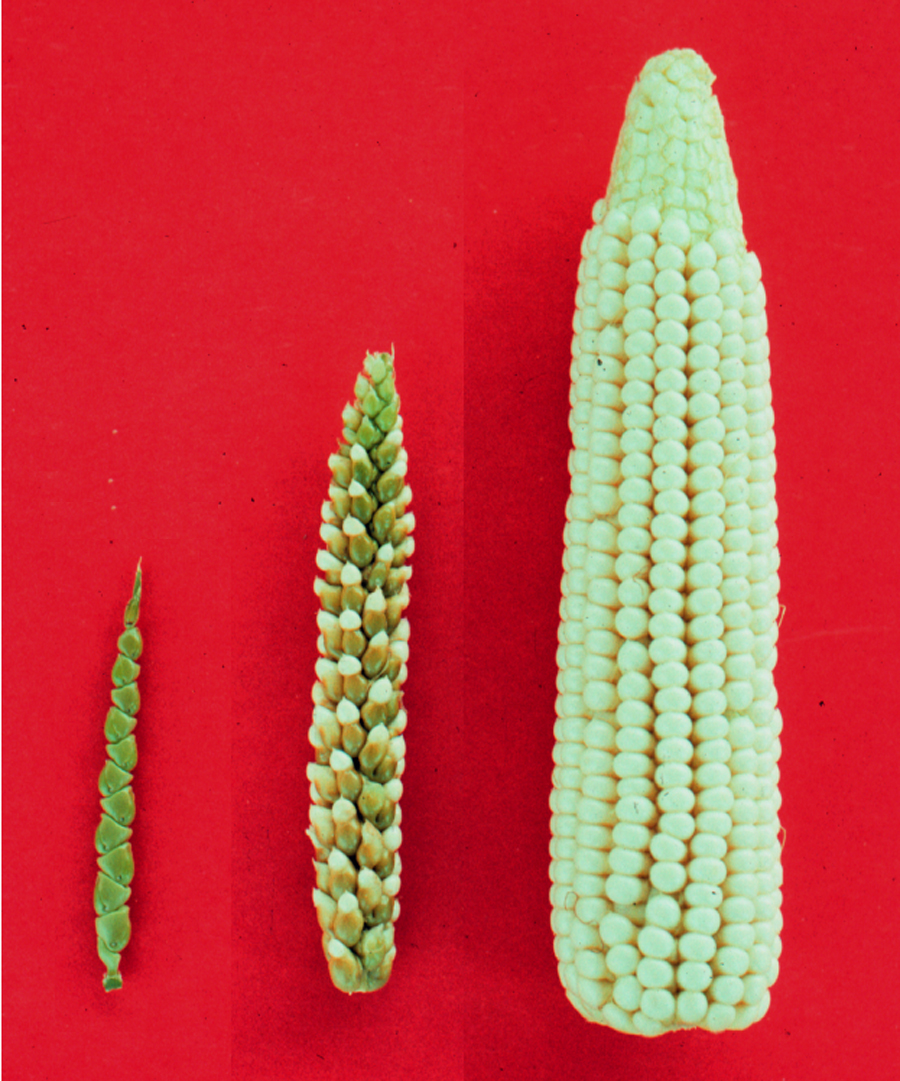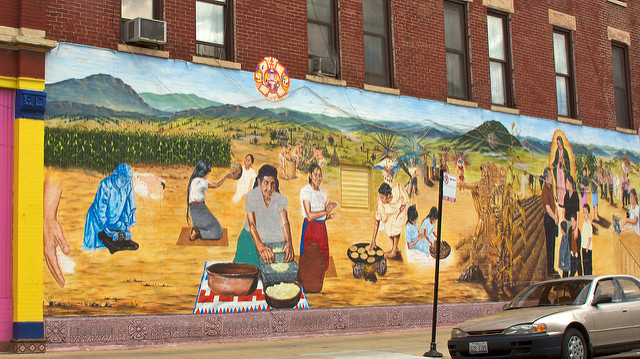What ancient corn farmers can teach us about engineering crops for climate change
In the era of GMO crops, farmers can learn old lessons of diversity
There are more than 50 strains of maize, called landraces, grown in Mexico. A landrace is similar to a dog breed: Corgis and Huskies are both dogs, but they were bred to have different traits. Maize domestication worked the same way.
Some landraces of maize can grow in really dry conditions; others grow best in wetter soils. Early maize farmers selectively bred maize landraces that were well-adapted to the conditions on their land, a practice that still continues today in rural areas of Mexico.
If you think this sounds like an early version of genetic engineering, you'd be correct. But nowadays, modern agriculture is moving away from locally adapted strains and traditional farming techniques and toward active gene manipulation. The goal of both traditional landrace development and modern genetic modification has been to create productive, valuable crops, so these two techniques are not necessarily at odds.
_01.jpg)
Corn cob DNA
But as more farmers converge on similar strains of (potentially genetically modified) seeds instead of developing locally adapted landraces, there are two potential risks: one is losing the cultural legacy of traditional agricultural techniques that have been passed on in families for centuries or even millennia, and another is decreasing crop resilience even as climate variability is increasing.
From weed to tortilla
Mexico is the main importer of US-grown corn, but that imported corn is primarily used to feed livestock. The corn that people eat or use to make tortillas is grown almost entirely in Mexico, which is where landraces come in.
It is a common practice to grow multiple landraces with different traits as an insurance policy against poor growth conditions. The wide range of landraces contains a huge amount of genetic diversity, making it less likely that one adverse event, such as a drought or pest infestation, will wipe out an entire crop. If farmers only grow one type of corn, the whole crop is vulnerable to the same event.
Landraces are also different from most commercially available hybrid strains of corn because they are open pollinating, which means that farmers can save seeds and replant them the next year, saving money and preserving the strain. If a landrace is not grown anymore, its contribution to maize's genetic diversity is permanently lost.

Domesticating maize
John Doebley, University of Wisconsin Madison
This diversity was cultivated over generations from maize's wild cousin, teosinte, by 60 groups of indigenous people in Mexico. Teosinte looks like a skinny, hairier version of maize. It still grows wild in some parts of Central America, but its close relatives have been found, domesticated, at archaeological sites in the region over 9,000 years old. These early maize cobs could easily fit in the palm of your hand – not big enough to be a staple crop that early farmers could depend upon for sustenance. Genetically, they were more similar to wild teosinte than to modern maize.
Until recently, historians and scientists alike weren’t sure how long it took for maize to spread outside southern Mexico, and what that spread did to its genetic diversity. Moreover, they were unsure how maize transformed from a skinny weed into a productive crop eaten across the world.
That uncertainty changed when Douglas Kennett, professor of environmental archaeology at Penn State, and several colleagues from anthropology departments around the US, started working on a rock shelter in Honduras with thousands of fossilized cobs. In a study published this past summer, they found that maize was a staple food crop in the region by 4,300 years ago.
.jpg)
Young Maya Corn God
To figure out how productive the maize was, they ended up using a low-tech method with a fancy name: morphological analysis – aka, looking at lots of corn. If the cobs were too small, it would mean that maize wasn't a staple crop yet. They found the opposite: the cobs were large enough to suggest that farmers had selected for highly productive types of maize and were using it as a staple food crop. The archaeologists also found that the cobs in Honduras, which is outside the natural range of teosinte, were larger than cobs of the same age from the original domestication region in southern Mexico. The scientists think that people in Honduras were able to develop more productive maize landraces because their crops were isolated from wild teosinte.
The size and shape of the ancient cobs from Honduras show that early farmers engineered the maize crop to make it more productive. They developed unique landraces that were well adapted to local conditions and successfully cultivated enough maize to support their communities. In many ways, they were early geneticists. However, in contrast to modern genetic modification, which strives to make things uniform, they were able to preserve the huge amount of genetic diversity present in maize. In fact, there is more genetic diversity in domesticated maize than in wild teosinte.
Crucial diversity
We have a lot to learn from the indigenous farmers who were growing maize 4,000 years ago. Their history provides examples of both environmentally sound genetic modification and effective adaptation to climate variability. As droughts and storms alike become more severe and frequent, crops will need to live through more extreme weather than they do now.

Early farmers from Mexico to Honduras (and beyond) dealt with similar environmental differences by developing their own locally adapted landraces. In regions that are cold or dry, local landraces grow better than commercially available strains. Moreover, the genetic diversity preserved in landraces means that modern farmers still have a wide library of traits to choose from. Wiping out this valuable diversity by switching to hybrid crops that are not open pollinating will make maize crops far more vulnerable to adverse events.
In addition to the genetic motivation to preserve maize landraces, there might be a culinary push to keep the varieties around. Unfortunately, the mass-produced tortillas most people in the US and Mexico eat are a far cry from homemade, small-batch tortillas that only contain corn, slaked lime (to break down the kernels and make them more nutritious), and water. People argue that specialized landraces actually have better flavor than typical corn varieties (I happen to agree with them).
Creating a market for traditional landraces of maize creates an increased commercial incentive to grow them and may be the way forward for preserving the resilience of this important and delicious crop. And that would be better for all in the long run, when an increasingly unpredictable climate will require plenty of options for our food sources to continue thriving. Staying true to the traditions of the past may actually be the key to surviving into the future.
.png?auto=compress%2Cformat&crop=faces&fit=crop&fm=jpg&h=360&q=70&w=540
)


While I broadly agree with the author’s core point that we can learn much from studying ancient plant varieties, there are several points in this article I disagree with: